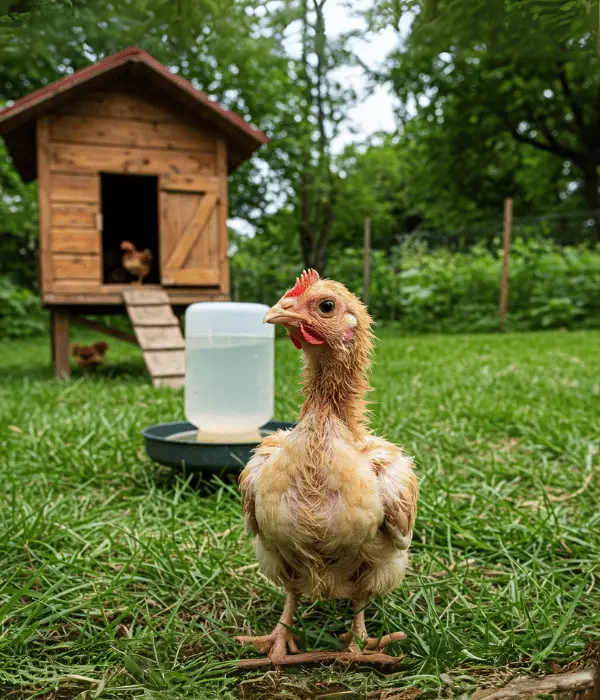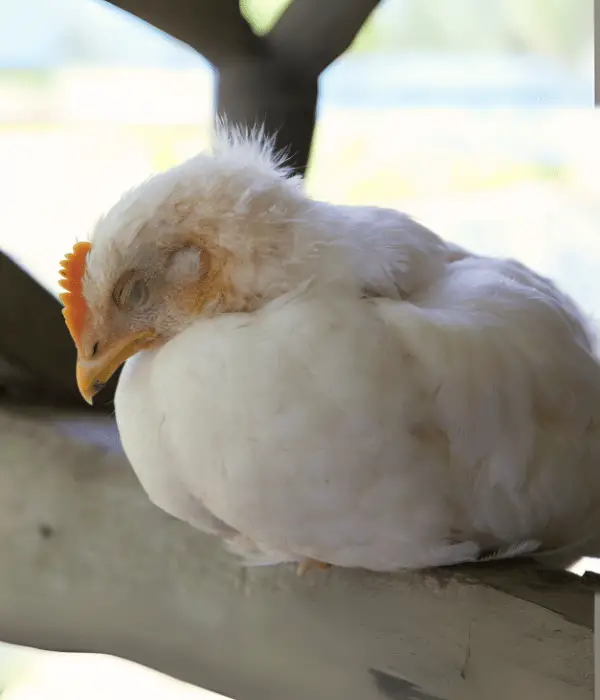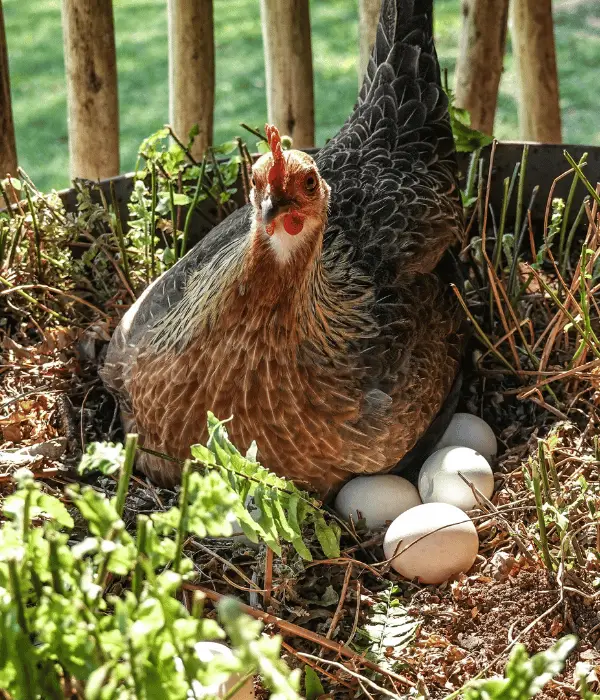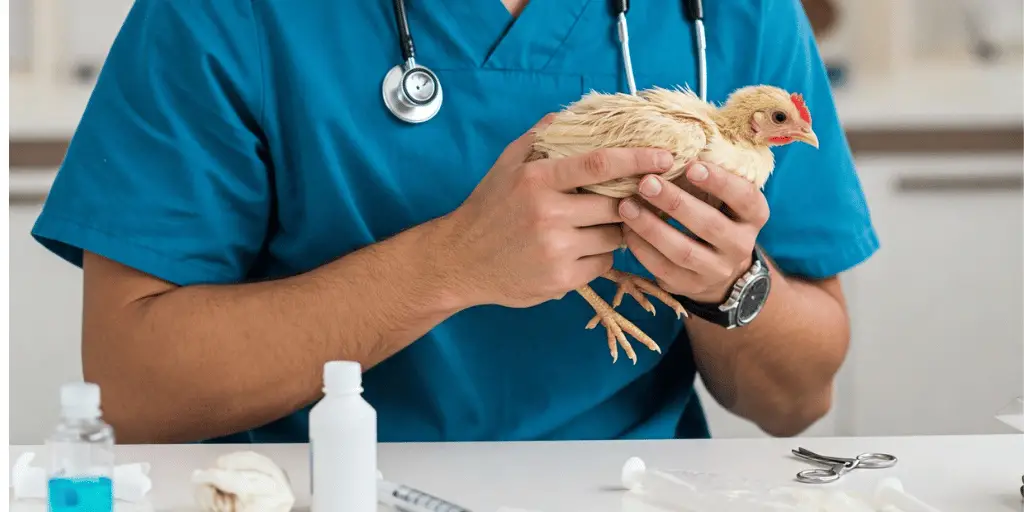If you are poultry farmer, it is essential to know when to call a vet for your chickens.
Backyard chickens are increasingly popular, providing many households with fresh eggs and the pleasure of keeping animals.
However, many mistakenly believe these birds are naturally tough and need little care, so they often try home remedies for illnesses.
Introduction
Chickens can be wonderful pets, but only if their needs are met; otherwise, they’ll suffer from various health problems.
Ensuring they are safe, happy, and have access to good food and enrichment.
However, many people mistakenly believe these birds are highly resilient and require minimal care, so they attempt home remedies instead of consulting a veterinarian.
Chickens are susceptible to illness, so it’s essential to keep them healthy. People often don’t realize how challenging it can be to raise chickens.
Although they typically lay eggs for 2-3 years, chickens can live up to 15 years.
Their long lives mean we need to think seriously about their long-term health and plan for potential future needs.
Also, don’t forget that backyard chickens can spread diseases, like salmonella. That’s a big deal.
Touching birds or their poop can spread these bacteria to people. This is particularly hazardous for infants, the elderly, and individuals with weakened immune systems.
Keeping backyard chickens healthy is essential for the birds, you, and the community.
You can do basic first aid at home for minor injuries. However, it is essential to understand when to take your chickens to a veterinarian.
If you are raising chickens, it is essential to consult a veterinarian for guidance on health-related matters.
In this guide, you will learn when to call a vet for your chickens and when you can treat them in the absence of a vet.
Understanding Normal Behaviors and Physical Activity of Your Chickens

To know when your chicken needs a vet, you first need to know what’s normal for them.
1. Physical Appearance
Regular check-ups help you catch health issues early. A healthy chicken is usually bright-eyed, alert, and happy to interact with its friends and surroundings.
They must have good appetites, and hens should lay eggs regularly. Specific physical attributes also show good health.
The comb and wattles on the head and neck are typically bright red and puffy, unless the breed naturally exhibits a different color.
If your chicken’s combs appear pale or shrunken, it may be anemic, dehydrated, or experiencing blood loss.
A healthy chicken’s eyes should be bright, clear, and wide open—no redness or gunk.
Nostrils must be clean and dry, with no discharge or crusting. The beak must be smooth, unbroken, and free from cracks or abnormalities.
Healthy chickens have smooth, clean, and neatly arranged feathers, though some loss is normal during molting.
Keep the vent area clean; it is the external opening for the digestive and reproductive systems and should be free of feces.
Their legs should be bright, typically yellow, depending on their diet and breed, with smooth, flat scales.
Toes should be straight, evenly spaced, and foot pads flat, without scabs or swelling. A healthy chicken should feel heavy enough for its type and age, with solid breasts.
2. Healthy Behaviors
Physical appearance isn’t the only indicator of health; typical healthy behaviors matter too.
These activities involve searching for food, grooming feathers, and finding a comfortable place to rest.
Chickens are social animals and need to interact with their flock mates, making their characteristic chicken noises.
What is considered “normal” for chickens depends on their breed, age, and environment.
For example, some breeds are naturally calmer than others, and young chicks act differently from adult hens.
Owners should observe their flock to learn what is typical for their specific birds.
Note and investigate any significant shifts in a chicken’s behavior or looks; these could be early warning signs of illness.
Unraveling Respiratory Issues: Identifying When a Chicken’s Breathing is a Cause for Concern

1. Early Signs and Common Symptoms
Respiratory issues in chickens are serious and often signal a more serious underlying health problem.
Respiratory problems in chickens are a warning sign of a severe disease, unlike in humans, where it’s often a common cold.
Owners must closely monitor their flock for respiratory problems; early detection is crucial for successful treatment.
A few particular respiratory signs can signal trouble. This involves frequent sneezing; head shaking may also occur.
Neck extension in chickens frequently accompanies coughing, which can sound like a honk or high-pitched squeak.
If your chicken’s breathing heavily or wheezing, that’s a big warning sign. If your bird’s breathing is heavy, even when it’s not hot or stressed, check it out.
A chicken gasping, with its neck stretched out and head up, is a sign of a serious breathing issue, maybe an acute infection or something blocking its air passages.
Nasal and eye discharge in chickens, ranging from watery to bloody, is a typical symptom of respiratory problems.
Respiratory infections sometimes cause swelling in the eyes, face, or sinuses. You might also hear a rattling or gurgling sound in their chest.
If the comb and wattles change color (like turning blueish or pale), it could mean they aren’t getting enough oxygen.
Sometimes, you might see a chicken shake its head to clear its throat. If you see bloody mucus, you could have a severe infection such as Infectious Laryngotracheitis (ILT).
2. Knowing When It’s Serious
It’s essential to tell apart mild and severe respiratory symptoms so you know when to bring your chicken to the vet.
While an occasional sneeze is generally nothing to worry about, persistent sneezing accompanied by additional symptoms should be a cause for concern.
Gasping, significant swelling, or a dark comb are severe symptoms requiring immediate veterinary care.
3. Causes and Conditions Behind Breathing Issues
Don’t forget about the flock environment – things like dust, inadequate ventilation, and stress can mess with the birds’ respiratory health.
Adding new chickens can sometimes mean respiratory problems. Many chicken illnesses affect their breathing, and each has different signs.
Mycoplasma gallisepticum (CRD) is a bacterial infection that causes gradual symptoms, including coughing, wheezing, runny nose, swollen eyes, and sinus congestion.
Infectious bronchitis (IB) is a highly contagious virus that can cause chickens to cough and sneeze, and it also affects their egg-laying ability.
ILT is a severe virus; symptoms include bloody mucus, gasping breaths, and “pump-handle” breathing.
Gapeworm, a parasite, can cause chickens to gasp and wheeze, but without other typical breathing problems.
Highly contagious bird flu is deadly and causes symptoms such as panting with the mouth open, discharge from the eyes and nose, a dark comb, swollen wattles, and a swollen head.
Another viral disease, Newcastle disease, can cause breathing and brain problems. Infectious coryza is a bacterial disease; common symptoms include sneezing, a runny nose, and a puffy face.
Aspergillosis is a fungal infection that can also cause respiratory distress. A chicken with severe breathing problems needs to be separated to prevent the others from contracting the illness.
4. Diagnosis, Treatment, and Prevention
Supportive care, such as vitamins and electrolytes, is beneficial; however, consulting a veterinarian is crucial for a successful recovery.
Veterinarians use various tests, such as blood tests, PCR, cultures, and necropsies, to determine the cause of birds’ illnesses.
Sick chickens often need specific medicines, like antibiotics, and a vet can tell you what and how much to give.
Treating unknown illnesses yourself is dangerous, particularly those that are highly contagious, such as avian flu.
Take your chicken to the vet immediately if it is experiencing breathing problems.
Table 1: Common Respiratory Illnesses in Chickens
| Illness | Cause | Key Symptoms |
| Mycoplasma (CRD) | Bacterial | Coughing, wheezing, nasal discharge, bubbly eyes, swollen sinuses, lethargy, poor condition. |
| Infectious Bronchitis (IB) | Viral | Sneezing, coughing, watery eyes, nasal discharge, decreased egg production, misshapen/soft-shelled eggs. |
| Infectious Laryngotracheitis (ILT) | Viral | Gasping, “pump-handle” breathing, bloody mucus, coughing, sneezing, watery eyes. |
| Gapeworm | Parasitic | Gasping, stretching the neck, shaking the head, and coughing; no other typical respiratory signs. |
| Avian Influenza (HPAI) | Viral | Sudden death, open-mouth panting, discharge from eyes/nostrils, dark/purple comb, head swelling, high fever, decreased egg production. |
| Newcastle Disease | Viral | Respiratory distress (coughing, gasping), neurological signs (tremors, paralysis, twisted neck), and a drop in egg production. |
| Infectious Coryza | Bacterial | Swelling around the face, foul-smelling, thick nasal/eye discharge, labored breathing, and sneezing. |
| Aspergillosis | Fungal | Gasping, panting, discharge from nares/eyes, lethargy, increased thirst. |
Spotting Sudden Lethargy and Weakness: Understanding When a Chicken’s Energy Levels Signal a Problem

1. Spotting the First Signs
If your chicken’s suddenly weak or sluggish, that’s a common sign of illness, and you should take a look.
A little less activity might be due to molting or extreme temperatures, but if they’re sluggish or something else seems off, don’t ignore it.
Reduced activity is a clear sign of lethargy in chickens. Sick birds might seem unusually tired, sluggish, and not interested in anything around them.
Signs of weakness include trouble moving around or being unable to support their weight.
Sudden lethargy and weakness are more concerning if other symptoms appear at the same time.
2. Associated Symptoms to Watch
A significant issue is reduced food and water intake; this rapidly causes dehydration and weakens the bird. Weakness often accompanies serious mobility issues, such as limping or even paralysis.
Signs of illness can include changes in posture, like holding the head low, appearing fluffed out, or huddling away from the flock.
You can also get clues from the color of their comb and wattles. Between the breathing, droppings, and how tired and weak they are, something’s seriously wrong.
3. Possible Causes of Weakness
Lots of things can cause sudden tiredness and weakness in chickens—that’s why you need a vet.
This can be from severe infections, parasites, health issues, not eating correctly, organ problems, or getting poisoned.
Problems laying eggs, such as egg binding, can make hens appear lethargic and weak. Neurological issues often manifest as weakness, clumsiness, and fatigue.
Chickens with severe injuries may become weak and lethargic. Extreme heatstroke or severe cold stress can quickly cause lethargy and weakness.
4. When to Intervene
A tired pet might simply be molting or stressed, but if the tiredness is severe, sudden, or accompanied by other issues, take them to a vet as soon as possible.
You can try basic home care, such as giving them fluids with electrolytes. If the chicken remains lethargic or its condition worsens, take it to the vet immediately.
Interpreting Droppings: Recognizing Abnormalities That Indicate Underlying Health Issues
1. Why Chicken Droppings Matter
Checking out the chicken poop can help owners keep an eye on their flock’s health.
If you’re used to how chicken poop usually looks, you can tell when something’s off and might need a vet.
2. What Normal Poop Looks Like
Chicken droppings are usually firm, tan to brown, and may have a greenish tint. You should also see a typical white cap of uric acid on the poop.
Chickens poop in two ways; one is regular poop, and the other is from their cecum. You don’t see these as often (maybe every 8-10 times), but they’re thicker, stickier, darker (yellowish to black), and smell awful.
Hens that stay on their nests a long time poop a lot when they finally get up. What chickens eat changes the color of their poop.
3. Signs of Trouble in Poop
Most poop variations are normal, but some weird stuff means your pet might be sick. Blood in the droppings, regardless of color (bright red or dark and tarry), demands immediate attention and investigation.
Unusual stool colors may indicate underlying health issues, such as persistent green, yellow, white, or black stools.
Changes in stool consistency, including watery diarrhea or pasty residue near the vent, may also indicate illness.
Conversely, infrequent or absent bowel movements (constipation) may also indicate a problem.
Note also any mucus, undigested food, foul odor, or powerful smell in the droppings. The presence of worms in the droppings confirms a parasitic infestation that requires treatment.
4. When to Take Action
Along with other symptoms, abnormal chicken droppings need consideration. For example, bloody diarrhea, lethargy, and a pale comb strongly indicate coccidiosis.
Greenish diarrhea coupled with respiratory distress and neurological symptoms could indicate Newcastle disease.
If you see weird chicken poop, keep a close eye on it for other signs of sickness, like changes in eating, activity, or egg laying.
If your pet’s poop looks weird or concerning, take it to the vet. A sample might help them diagnose the problem.
Owners should also be aware of vent gleet, a condition characterized by a pasty or sticky vent, which can indicate a pH imbalance, fungal or bacterial infection, or other underlying issues.
Table 2: Interpreting Abnormal Chicken Droppings
| Dropping Appearance | Potential Causes | Associated Symptoms |
| Blood in droppings | Coccidiosis, internal bleeding, kidney disease, enteritis, worms, and poisoning | Lethargy, pale comb, ruffled feathers, weight loss, decreased appetite. |
| Persistent Green Droppings | Newcastle disease, liver problems, starvation, and fowl cholera | Respiratory distress, neurological signs, reduced appetite, and depression. |
| Persistent Yellow/Mustard Droppings | Worms, bacterial infection (Salmonella), high protein diet, and kidney dysfunction | Lethargy, decreased appetite, and foamy appearance. |
| Persistent White/Gray-white Droppings | Pullorum, fowl cholera, infectious bursal disease, kidney problems, appetite loss, paralysis, and uremia | Sticky vent, weakness, loss of appetite. |
| Persistent Black/Tarry Droppings | Upper gastrointestinal bleeding, ingestion of dark-colored foods (e.g., berries, charcoal) | Weakness, lethargy. |
| Excessively Watery Droppings (Diarrhea) | Heat stress, increased water intake, diet high in water content, bacterial infections (e.g., E. coli, Salmonella), viral infections (e.g., Infectious Bronchitis), parasitic infections, kidney problems, stress, and vent gleet. | Lethargy, decreased appetite, ruffled feathers, weight loss, dehydration, dirty vent feathers. |
| Pasty Droppings around Vent | Diarrhea, vent gleet, young chicks (pasted butt), certain infections | May or may not be accompanied by other signs of illness. |
| Presence of Worms | Internal parasitic infestation | Weight loss despite good appetite, pale yolk, strong-smelling diarrhea. |

1. When Egg Production Drops
A hen’s egg-laying habits and egg appearance can reveal her health. Although some egg-laying variations are normal due to age, season, or breed, significant problems require veterinary care.
A sharp drop in egg-laying, outside of typical winter or molting patterns, may indicate stress, poor nutrition, or disease.
Avian influenza can significantly reduce egg production, whereas other diseases may cause a more gradual decline in egg production.
Inadequate protein or calcium, among other nutritional imbalances, can hinder egg production.
2. Serious Conditions Affecting Laying
A stuck egg in the oviduct causes egg binding, or dystocia, a serious condition in hens.
Among the signs of egg binding are lethargy, straining to lay eggs, unusual postures, tail pumping, a lack of appetite, and behavioral shifts.
Sometimes, hens might seem weak, disinterested in food and movement, and show signs of panting and strained abdomens.
Weakness or lameness in one or both legs can result from the egg pressing against nerves.
Egg binding can happen for many reasons: lack of calcium, being overweight or underweight, a rotten egg, or problems laying eggs. This requires immediate veterinary attention.
3. Abnormal Egg Appearance
If your hen’s eggs are weird, see a vet. If an egg’s shell is soft or missing, it could be from a lack of calcium or vitamin D, an infection, or a virus.
Other things, like a poor diet, salty water, or heat stress, can also give you cracked or weak eggshells.
Weird-shaped eggs (all long and dented and so on) sometimes occur due to problems with egg laying, stress, or illness.
Finding blood or meat spots in eggs is sometimes normal, but it can also indicate that the hen is experiencing stress or reproductive issues.
If your eggs are unusual in appearance (too small or large, watery, etc.), there may be an issue.
4. Internal and External Reproductive Disorders
A hen’s vent prolapse, sometimes called a “blowout,” is when inner vent tissues protrude, often during or after egg-laying.
This may result from the strain of laying large or soft eggs, obesity, or muscle weakness from aging or inadequate nutrition.
A red, fleshy growth protruding from the vent is a clear symptom; the hen may also show pain or reluctance to move.
This is an emergency! Sometimes, home care works, but often you’ll need a vet, especially if there’s tissue damage or the wound won’t retract.
Egg yolk peritonitis, also known as internal laying, results from a developing, damaged, or incompletely shelled egg being deposited in the body cavity rather than being laid.
Affected hens may cease egg production, lay oddly shaped eggs, and exhibit lethargy, anorexia, and increased nesting.
A rotten egg or other reproductive diseases can cause this. You’ll need a vet to diagnose and treat it, and that might involve supportive care, antibiotics, or surgery.
Visible Signs of Illness or Injury: When You Should Call a Vet
1. Wounds, Swelling, and Physical Injuries
Watching a chicken closely can reveal signs of illness or injury needing veterinary care. Noticeable signs, along with behavioral changes and other symptoms, can indicate the severity of the problem and whether you need professional help.
Open wounds in chickens are a sign of injury; they can bleed, be infected (characterized by redness, swelling, and pus), or both. Localized or generalized swelling can show inflammation, infection, or trauma.
A bruise or discoloration may be a sign of an injury or internal bleeding. If a chicken has a limb that looks bent out of shape or can’t stand on it, they needs a vet.
If you notice anything unusual, such as tissues hanging out, it’s best to have your pet checked by a veterinarian.
2. Comb, Eyes, and Nasal Symptoms
Sick people show different symptoms. Comb and wattle changes signal various health issues.
Symptoms such as eye discharge, swelling, cloudy eyes, or a pupil that is the wrong size can indicate an infection, injury, or nerve problem.
Runny or stuffy noses in chickens often indicate a respiratory problem.
3. Feather, Skin, and Weight Changes
Feather changes, including ruffled feathers, excessive feather loss, or poor feather quality, may indicate illness, stress, or parasitic infestations.
Skin lesions, bumps, or scabs could indicate an infection or disease. Chickens experiencing significant weight loss or emaciation may be suffering from a chronic illness.
4. Posture, Movement, and Neurological Symptoms
Posture changes may signal illness or discomfort, including a lowered head, slumped wings, a hunched posture, or an unusual waddle.
Symptoms such as head tilting, tremors, seizures, or trouble walking can indicate that something is seriously wrong with your chicken. It’s time to call a vet for your chickens.
5. Observation and Examples
If you notice any of these chicken problems, observe their behavior and other symptoms to determine what’s wrong and whether they require veterinary attention.
Like, a chicken with a puffy foot and a black scab might have bumblefoot. You can sometimes treat it yourself, but if it’s severe or the chicken is sick, see a veterinarian.
A little feather-picking is one thing, but significant feather loss accompanied by pale skin and tiredness could indicate a more serious condition, such as coccidiosis.
Table 3: Interpreting Visible Signs of Illness and Injury
| Visible Sign | Potential Underlying Conditions | Urgency of Vet Care |
| Open wounds, bleeding | Injury (pecking, predator), infection | Consult Vet |
| Swelling (localized or general) | Injury, infection, fluid retention, tumors | Consult Vet |
| Lameness or inability to walk | Injury, infection (e.g., bumblefoot), neurological disease, egg binding | Consult Vet |
| Neurological signs (head tilt, tremors, paralysis) | Neurological diseases (e.g., Marek’s, Newcastle), poisoning, nutritional deficiencies | Urgent Vet Care |
| Prolapsed vent | Egg laying complications, straining, and obesity | Urgent Vet Care |
| Significant changes in comb color (pale, blue/purple) | Anemia, respiratory distress, systemic infection, and heatstroke | Urgent Vet Care |
| Discharge from the eyes or the nostrils | Respiratory infections (viral, bacterial, fungal), eye injuries | Consult Vet |
| Ruffled feathers, poor feather condition | Illness, parasites, stress, and malnutrition | Consult Vet |
| Weight loss or emaciation | Chronic illness, parasites, malnutrition, and organ dysfunction | Consult Vet |
Recognizing Chicken Emergencies: Situations Requiring Immediate Veterinary Attention
1. When Every Second Counts
Some backyard chicken situations require urgent veterinary care because of the high risk of death, intense suffering, or fast disease transmission.
Rapid identification and response to these emergencies can dramatically increase the affected bird’s chances of survival.
2. Trauma, Bleeding, and Physical Injuries
We should consider any situation involving significant trauma or injury an emergency.
This covers things like nonstop heavy bleeding, severe cuts, broken bones or a broken limb, and wild animal attacks. If their eyes are hurt, take them to the vet as soon as possible.
A prolapsed vent, especially if the tissue is damaged or cannot be gently replaced, requires urgent care. A wound with maggots is seriously infected; take the bird to a vet immediately.
3. Respiratory Distress
Severe breathing problems are a serious emergency. You’ll notice your chickens are breathing hard, gasping, and their tail will be bobbing with every breath.
Their chest will work hard, too. Dark, bluish combs or wattles signal urgent veterinary care for your chicken.
4. Neurological Symptoms
Neurological signs that appear suddenly are also cause for alarm. You might suddenly collapse, not be able to walk, have seizures or tremors, or even get paralyzed.
5. Reproductive Emergencies
Egg-laying problems can be a real emergency. If a hen can’t lay an egg, she needs urgent care.
Severe prolapse of the vent may require immediate veterinary care.
6. Poisoning and Toxin Exposure
If you suspect poisoning, it’s a life-threatening emergency. A chicken that has ingested toxins, including plants, chemicals, or medications, needs immediate veterinary care.
Rapid onset of unusual symptoms like severe diarrhea, vomiting, or neurological signs can also suggest poisoning.
7. Sudden Severe Illness
Other emergencies involve a chicken that suddenly becomes very sick, exhibiting symptoms such as a drooping head, fluffed-up feathers, and closed eyes, while separating from the others.
Refusal to eat or drink for over 24 hours (anorexia) is another serious indicator. Although it is difficult to always quantify, a chicken with a high fever requires immediate attention. Get immediate veterinary help for a chicken that has lost consciousness.
8. Mass Sickness or Sudden Deaths
If a large number of birds suddenly die, it might be due to a contagious disease or poison – get a veterinarian involved right away!
9. Be Prepared
Keep your poultry vet’s contact info close by for emergencies. Fast action and a vet can help a sick chicken.
Conclusion
Responsible backyard chicken keeping requires attentive health management and consistent monitoring of your chickens.
Early detection of health issues in chickens is possible if owners are familiar with what a healthy bird looks like and are watchful for any abnormalities.
This report outlines veterinary concerns, including respiratory issues, unusual lethargy, irregular droppings, and difficulties with egg laying.
Visible signs of illness or injury, particularly those involving neurological symptoms or severe trauma, should also prompt concern.
You can treat minor pet problems at home, but for serious stuff or emergencies, a vet is essential.
It’s super important to get to know a poultry vet beforehand to keep your backyard chickens healthy.
Finding avian vets in your area is easy with resources like the Association of Avian Veterinarians website (aav.org).
Additionally, a well-stocked first-aid kit is beneficial for treating minor injuries and providing immediate care.
Backyard chicken owners can keep their chickens healthy and happy by being informed and prepared.
This definitive guide helped you understand when you need to call a vet for your chickens.
